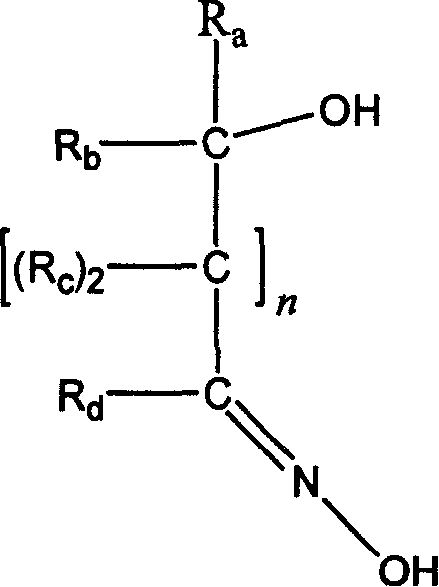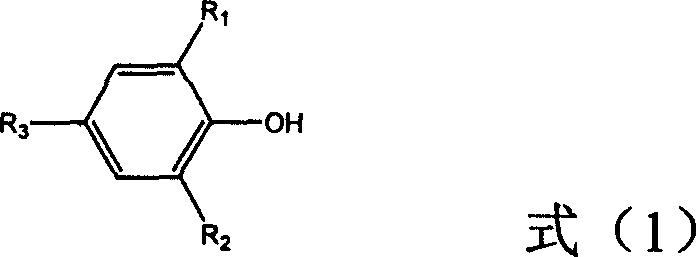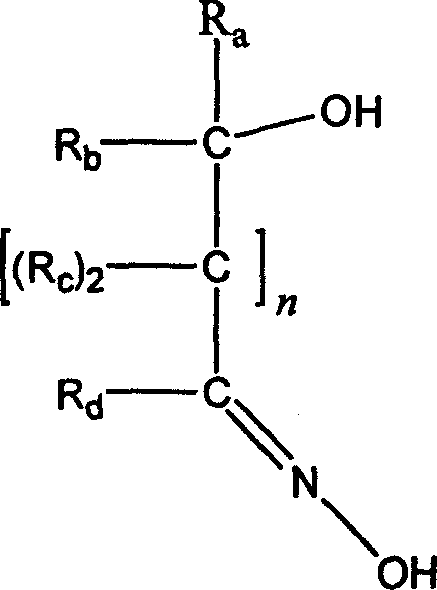Polymrization method of preparing polyphonyl ether/phenylethylene kind polymer alloy in reactor
A technology of styrene and polyphenylene ether, which is applied in the field of preparing polyphenylene ether/styrene polymer alloys, can solve the problems of polymer degradation and discoloration, and achieve the effect of preventing melt degradation and reducing the process of melt blending
- Summary
- Abstract
- Description
- Claims
- Application Information
AI Technical Summary
Problems solved by technology
Method used
Image
Examples
Embodiment 1
[0029] Using a 500mL reactor with gas inlet and outlet, stirring paddle, thermometer and constant temperature jacket, the preparation of polyphenylene ether / polystyrene alloy was carried out as follows.
[0030] Add 250 mL of distilled water containing 10 grams of sodium hydroxide into the reaction kettle, control the temperature of the reaction kettle at 40° C., and stir to completely dissolve the sodium hydroxide. Then, 2.44 g of 2,6-dimethylphenol was added to the aqueous solution and stirred until completely dissolved, while air was blown in. Separately prepare a mixed solution containing 0.50 g of cuprous chloride, 1.2 g of ethylenediamine, and 10 mL of water. The mixed solution was added to the reaction kettle, and 145 mg of sodium lauryl sulfate was added. After stirring and reacting for 1 hour, add 2.44g styrene, increase the stirring rate to 1500rpm, after reacting for 18 hours, add 0.00244g dibenzoyl peroxide, remove the air in the above-mentioned reaction kettle wi...
Embodiment 2~7
[0032] Basically repeat the procedure described in Example 1, the difference is the copper compound and the amine compound, see Table 1.
[0033]
Embodiment 8
[0035] Using a 500mL reactor with gas inlet and outlet, stirring paddle, thermometer and constant temperature jacket, the preparation of polyphenylene ether / polystyrene alloy was carried out as follows.
[0036] Add 250 mL of distilled water containing 10 grams of potassium hydroxide into the reaction kettle, control the temperature of the reaction kettle at 50° C., and stir to completely dissolve the potassium hydroxide. Then, 21.2 g of 2-methyl-6-phenylphenol was added into the aqueous solution and stirred until completely dissolved, while oxygen was introduced to keep the oxygen pressure in the reactor at 1 atm. 1.316 g of potassium ferricyanate and 1.45 g of sodium lauryl sulfate were then added. After stirring and reacting for 1 hour, 10.6 g of styrene and 0.6 g of α-methylstyrene were added, and the stirring rate was increased to 1000 rpm. After reacting for 18 hours, add 0.053 g of azobisisobutyronitrile, use nitrogen to remove the air in the reaction kettle, seal it, ...
PUM
 Login to View More
Login to View More Abstract
Description
Claims
Application Information
 Login to View More
Login to View More - R&D
- Intellectual Property
- Life Sciences
- Materials
- Tech Scout
- Unparalleled Data Quality
- Higher Quality Content
- 60% Fewer Hallucinations
Browse by: Latest US Patents, China's latest patents, Technical Efficacy Thesaurus, Application Domain, Technology Topic, Popular Technical Reports.
© 2025 PatSnap. All rights reserved.Legal|Privacy policy|Modern Slavery Act Transparency Statement|Sitemap|About US| Contact US: help@patsnap.com



